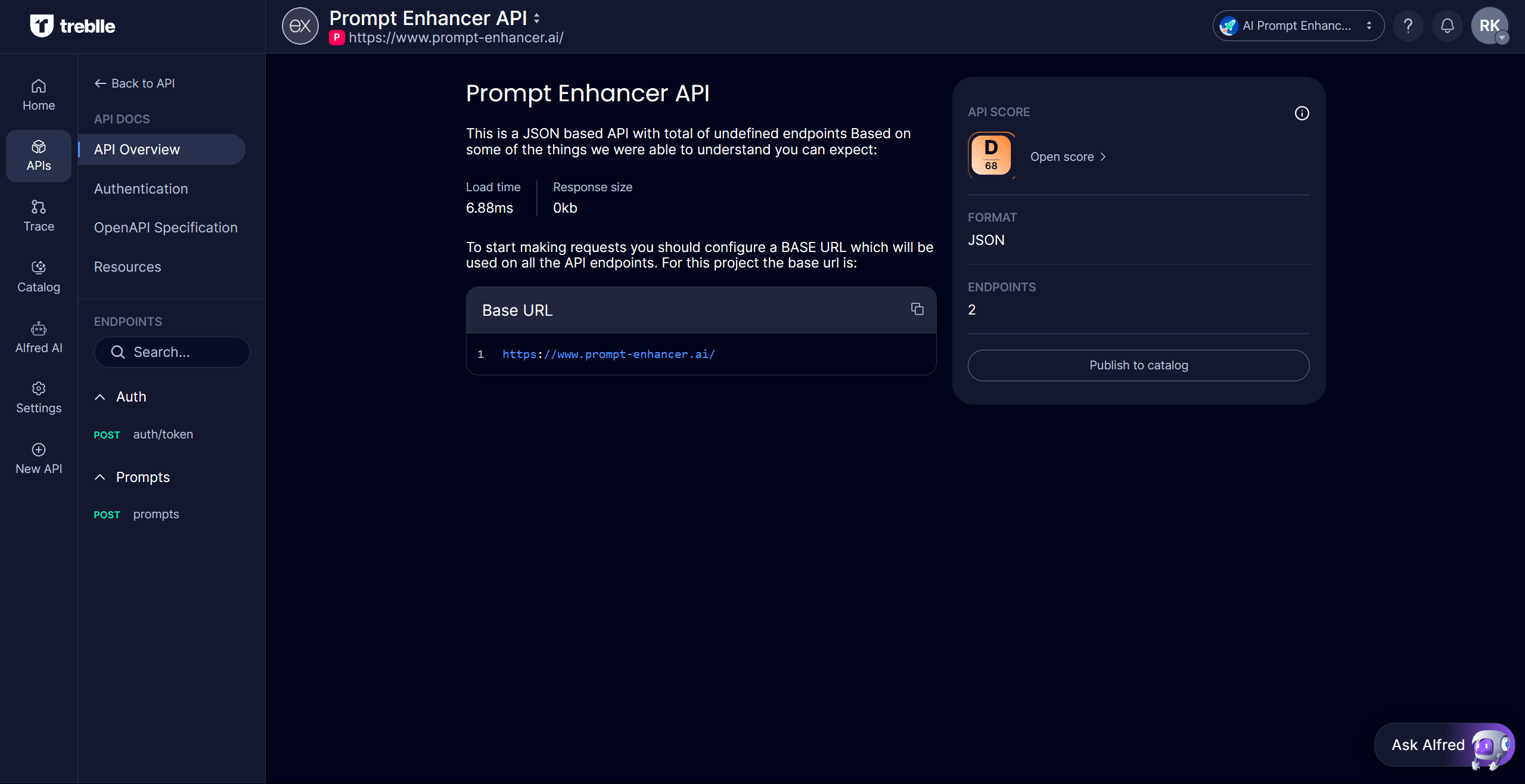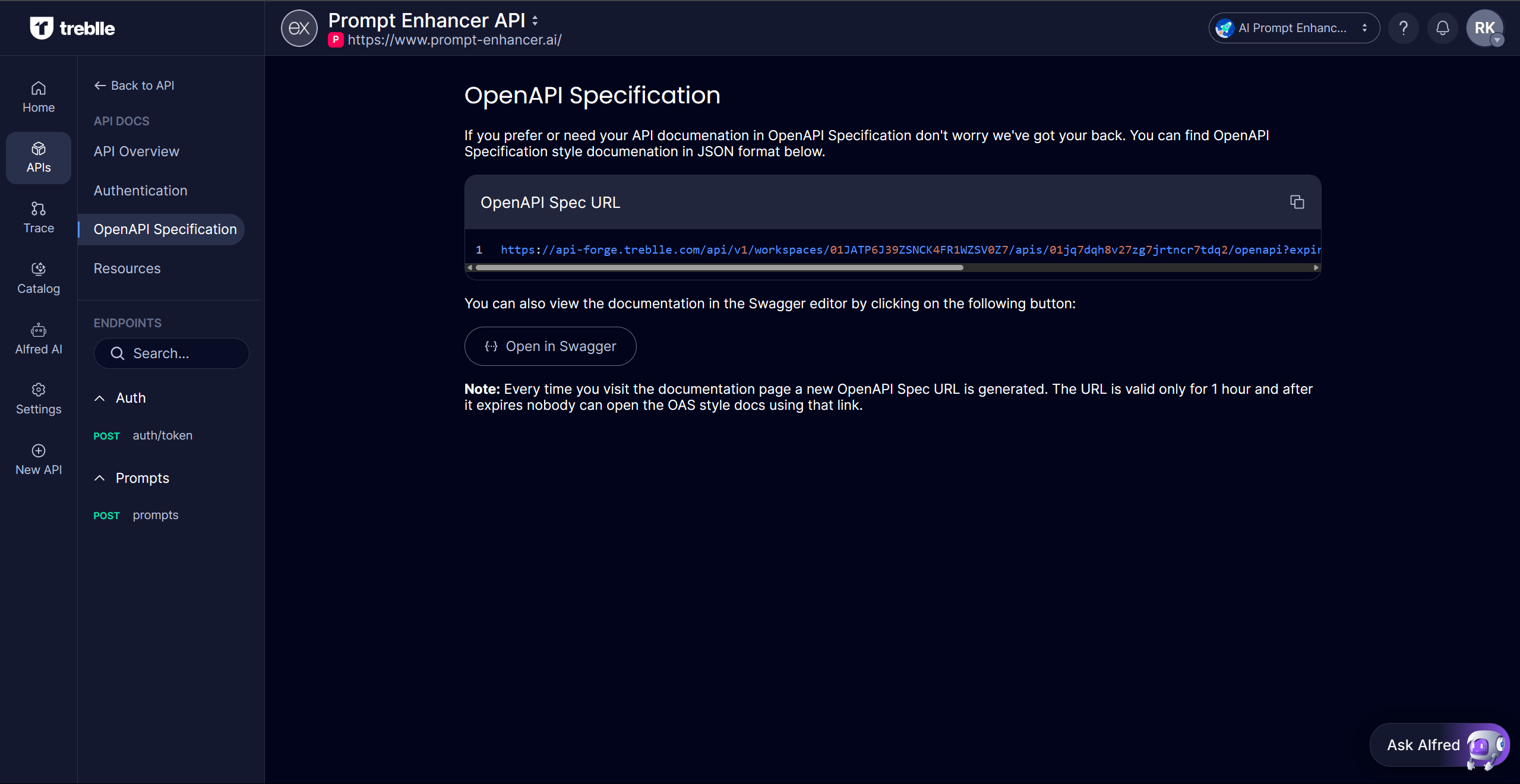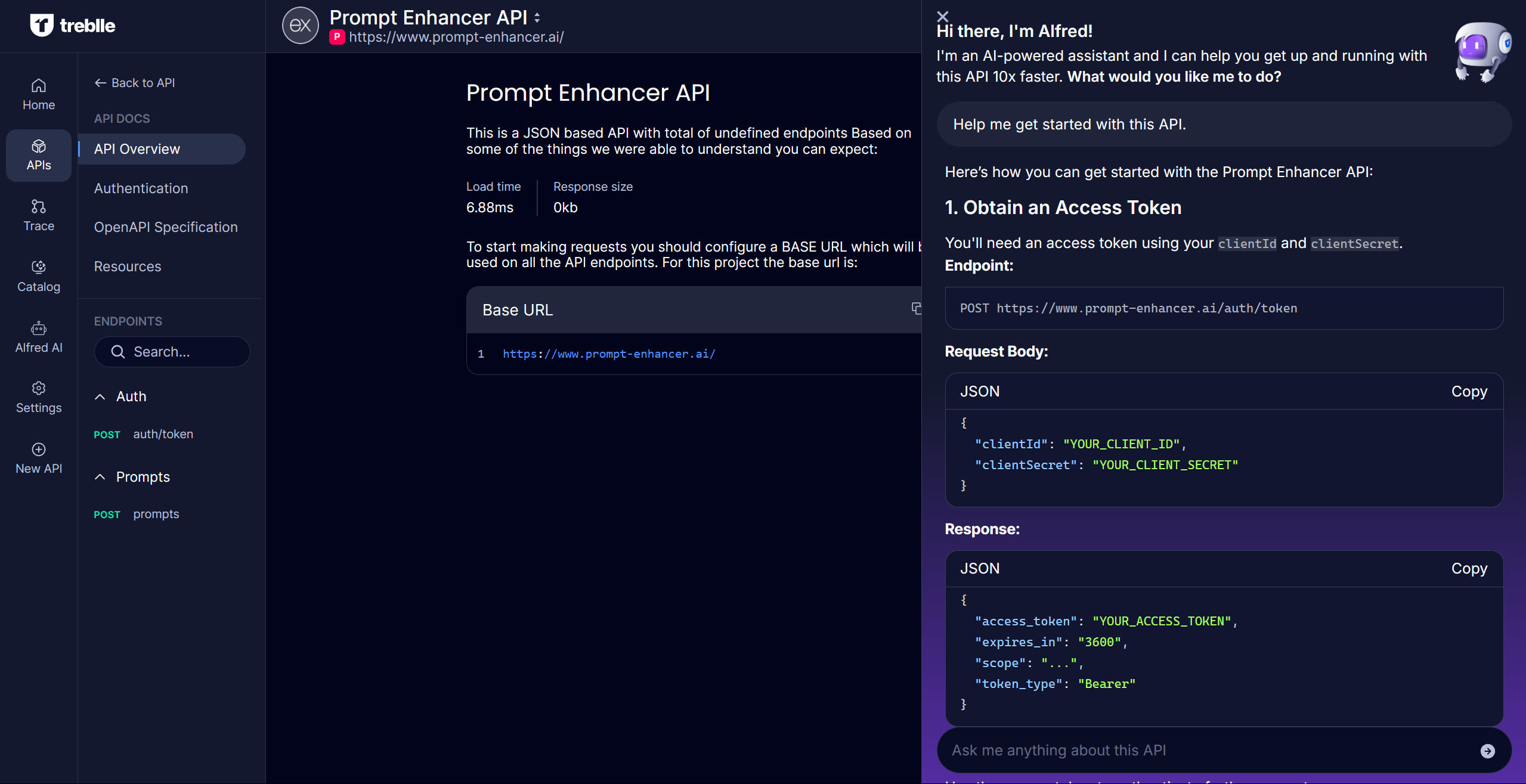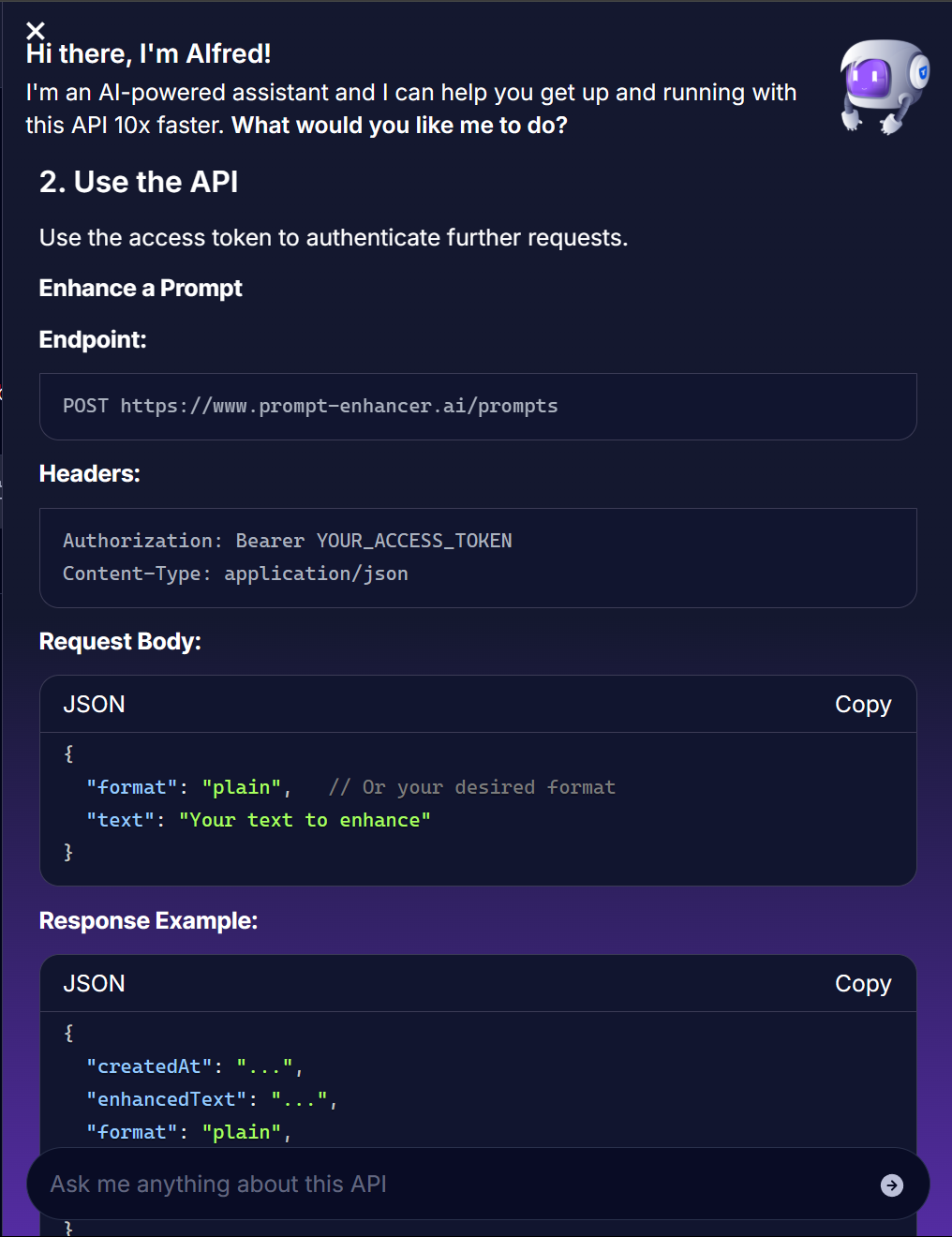4 min read
Discover how to keep your API documentation accurate and reliable over time, using the AI Prompt Enhancer project as an example and leveraging Treblle’s automated tools.

Congratulations!
You've successfully created comprehensive documentation for your API.
But the journey doesn't end here.
APIs evolve, features get added, bugs get fixed, and parameters change. Without proper maintenance, your once-pristine documentation can quickly become outdated and unreliable.
User Trust: When docs match behavior, developers build confidence; mismatches frustrate and erode credibility.
Reduced Support Overhead: Up-to-date docs mean fewer tickets about “why is this parameter missing?” or “what’s the real response shape?”.
Onboarding Efficiency: New team members or external consumers ramp up faster with reliable references.
Compliance & Audits: Accurate docs support security reviews and regulatory checks.
Future Development: Well-maintained docs serve as a living spec for planning enhancements.
Code Changes Without Spec Updates
In AI Prompt Enhancer, adding a new format parameter without updating openapi.yaml leaves docs out of date:
exports.enhancePrompt = async (req, res) => {
const { text, format = 'structured' } = req.body;
// ...
}Behavioral Adjustments
Changing response logic.
For example, returning an empty list instead of 404 needs corresponding doc notes.
Undocumented Endpoints or Features
New routes (like /v1/prompts/translate) often slip by without spec entries.
Version Control: Store your OpenAPI spec in the same repo as your code.
Pull-Request Checks: Enforce spec updates in your PR template and CI pipeline.
Change History: Track doc revisions alongside feature commits.
Code-First Tools: Use generators (e.g., swagger-cli, JSDoc, Spring REST Docs) to produce or validate your spec from annotations.
Build Step Integration: Run npm run generate-docs before deployments:
"scripts": {
"generate-docs": "swagger-cli bundle ./openapi.yaml --outfile ./public/openapi.json --type json"
}Spec vs. Implementation Tests: Write simple checks to confirm that endpoints and parameters in the spec match actual routes.
Automated CI Jobs: Fail builds on mismatches using tools like treblle-cli insights openapi.yaml --minimum 90.
Review Cadence: Schedule periodic audits (e.g., biweekly) to catch drift.
Review Checklist: Ensure each PR touches the docs when adding or modifying endpoints, parameters, or response formats.
The AI Prompt Enhancer project could include a documentation checklist in its CONTRIBUTING.md file:
## Pull Request Checklist
- [ ] Code changes are tested
- [ ] OpenAPI specification is updated for any API changes
- [ ] Examples in documentation reflect current behavior
- [ ] README.md is updated if necessary
- [ ] New endpoints include comprehensive documentationMulti-Version Support: Maintain separate specs or tagged docs for /v1, /v2, etc.
Server URLs in Spec: List versioned servers so consumers select the correct docs.
The AI Prompt Enhancer's OpenAPI specification reflects this approach.
# From openapi.yaml
servers:
- url: https://prompt-enhancer.ai/v1
description: Production server
- url: https://cdn.prompt-enhancer.ai/v1
description: CDN-backed production server
- url: http://localhost:5000/v1
description: Local development serverTreblle auto-generates API documentation in real-time based on the actual API usage. This documentation includes critical details such as:
Available endpoints
Authentication methods
Request and response formats
Technical specifications required for integration

Treblle supports OpenAPI Specification (OAS), the industry standard for describing APIs:
Auto-generates OpenAPI specifications in both JSON and YAML formats
Provides an "Open in Swagger" button for interactive documentation viewing
NOTE: Each time you visit the documentation page in Treblle, the system generates a new OpenAPI Specification URL. This URL remains valid for one hour before expiring.

Alfred AI Assistant
Treblle's documentation system includes Alfred, an AI assistant that helps with API workflows:
Uses your API documentation to provide real-time answers
Speeds up integration processes
Offers predefined prompts and answers questions like "Help me get started with this API."


Note: Alfred only accesses your API documentation and does not store or analyze your data. Based on your current API setup, it helps improve your documentation and integration process.